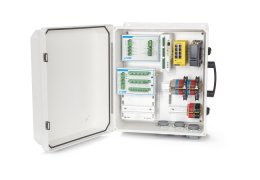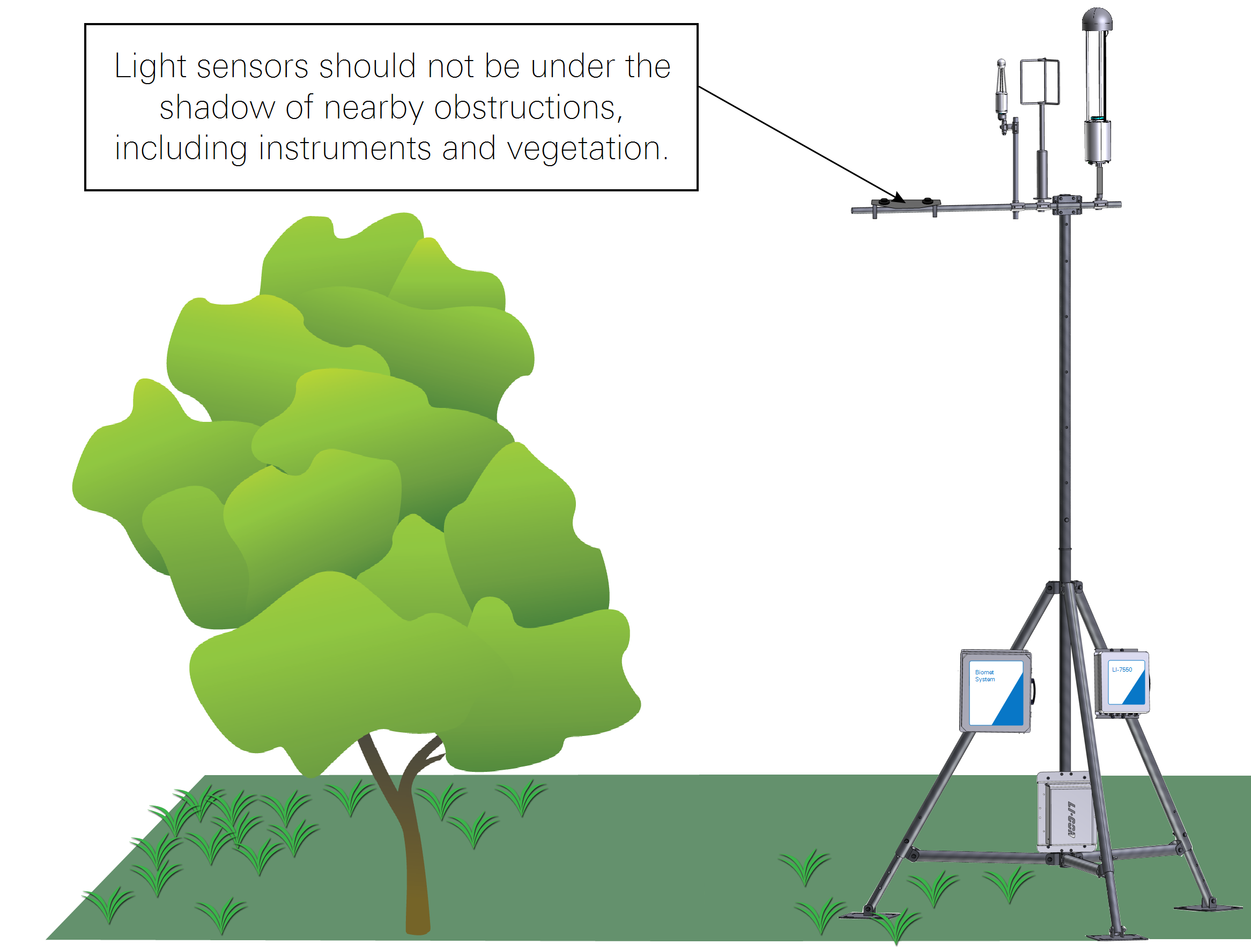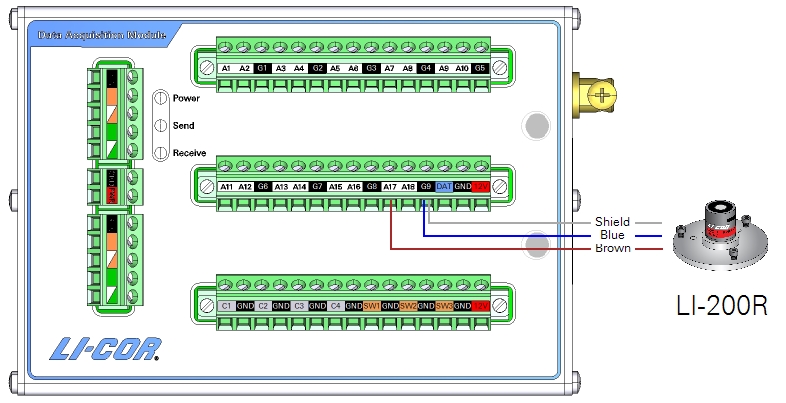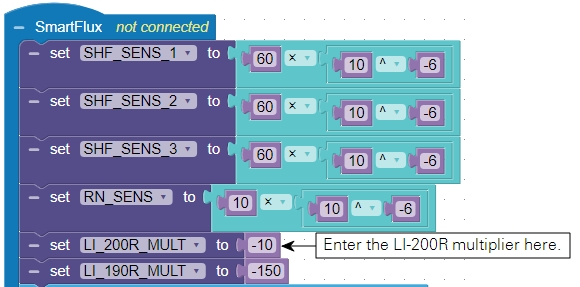Installing the LI-200R Pyranometer in Biomet Systems
Printable PDF: Installing the LI-200R Pyranometer in Biomet Systems
(Installing-LI-200R-12677.pdf)
Download this content as a pdf that can be saved to your computer or printed.
The LI-200R Pyranometer (part number 7900-195) measures hemispherical solar radiation. Here we provide basic installation and operation instructions for using the LI-200R Pyranometer in a LI-COR biomet data acquisition system.
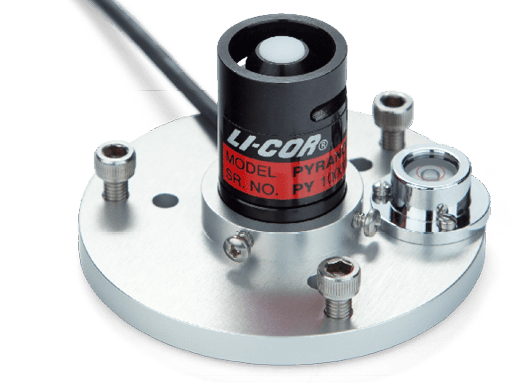
| LI-200R Specifications: | |
|---|---|
| Spectral response: | 400 to 1100 nm |
| Energy range: | 0 to 1000 W/m2 |
| Absolute calibration: | ±5% |
| Output signal: | 0 to 100 µA |
| Linearity: | Maximum deviation of 1% up to 3,000 W/m2 |
| Cosine correction: | up to 80° angle of incidence |
| Azimuth error: | <1% over 360° at a 45° elevation angle |
| Cable lengths: | 5 and 50 meters |
Siting the pyranometer
Position the LI-200R so it will never be under a shadow, either from the surrounding landscape elements or from the tower itself. Mount the sensor on the tower to minimize reflected radiation that is visible to the sensor.
Mounting the pyranometer
Mount the LI-200R in the mounting and leveling fixture (2003S). Attach the 2003S to the 7900-350 radiation sensor bracket and level the 2003S. Secure the cable to the tower using zip-ties.
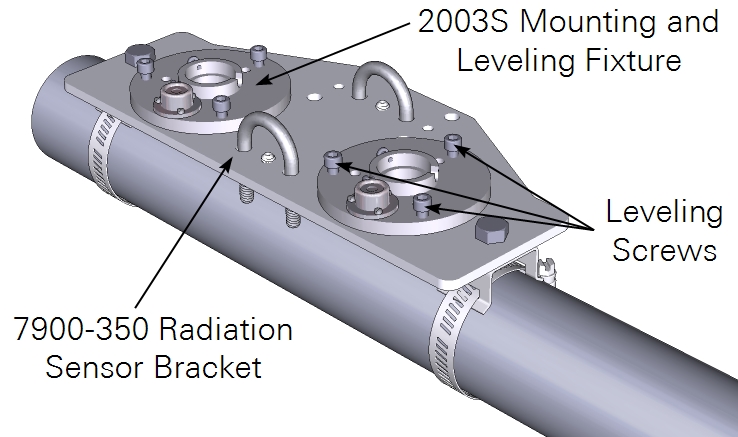
Wiring the pyranometer
| Description | Color | Terminal |
|---|---|---|
| Signal (-) | Brown | A17 |
| Signal (+) | Blue | G9 |
| Shield | Bare | G9 |
If you want to connect the LI-200R to a channel other than A17 or A18, a millivolt adapter is required.
Entering calibration data
Enter the calibration multiplier in the Blueprint Utility software. The multiplier on the calibration certificate is under For use with LI-COR handheld meters and loggers: (units are watts m-2 per microamp).
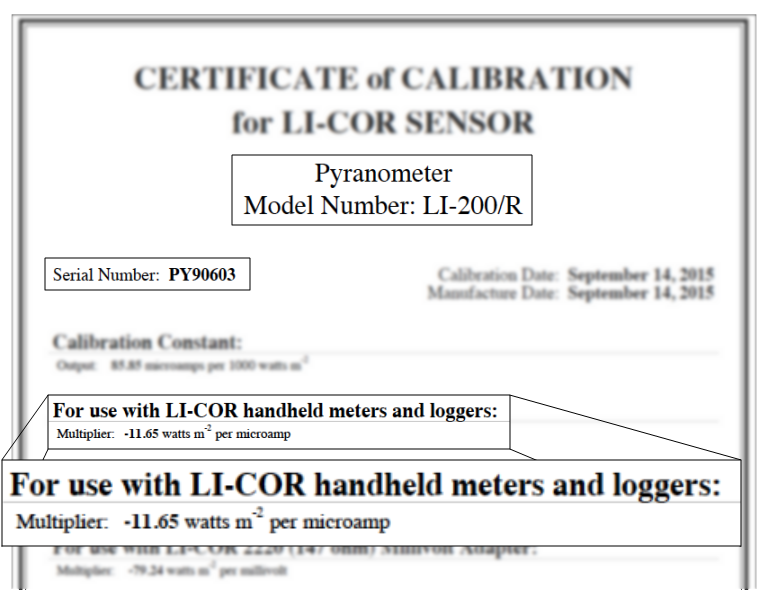
Select a program (Biomet Library) and then enter the calibration multiplier from the calibration sheet.
Save the configuration and push the file to the data acquisition system after entering the remaining calibration information.
Retrieving data
The SmartFlux System will log these data in compressed files for processing by EddyPro Software and evaluation by Tovi Software. Data are stored on the USB drive on the SmartFlux System. Refer to the Data Acquisition System instruction manual for details.
Maintenance
Keep the surface and vertical edge of the acrylic diffuser clean. As needed, clean the diffuser sensor with water, mild detergent, or vinegar dilute using a soft, lint-free cloth. DO NOT use alcohol, organic solvents, strong detergents, abrasive solvents, or abrasive cloth on the diffuser. Return the sensor to LI-COR for factory recalibration every two years. Contact technical support for more information.
